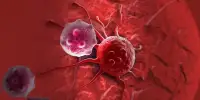Researchers have identified RBFox1 as a crucial intrinsic regulator of heart muscle cell maturation, addressing a critical constraint in cardiac regenerative therapy and disease models and demonstrating for the first time that RNA splicing regulation can have a significant impact on this process.
Scientists from Duke-NUS Medical School in Singapore and the University of California, Los Angeles (UCLA) in the United States have discovered a new control mechanism that can drive the maturation of human stem cell-derived heart muscle cells, providing new insight into the maturation process of heart muscle cells from fetal to adult form.
Heart muscle cells undergo considerable alterations after birth to become completely mature adult cells, resulting in changes to their structure, function, and physiology. However, the regulatory processes driving this maturity remain little understood. This lack of understanding has proven to be a significant constraint in regenerative therapies, as efforts to develop stem cell-derived heart muscle cells have failed to produce mature adult cells capable of repairing or increasing heart function.
Our results uncover a promising molecular approach to improve heart cell maturation, which could overcome a major limitation in cardiac regenerative therapy and disease modelling.
Dr Huang Jijun
Publishing in Circulation, the research team used transcriptomic analysis to pinpoint an RNA splicing regulator named RBFox1 that was highly elevated soon after birth in a newborn heart. Analyses of published single-cell data also showed dramatic RBFox1 increase in maturing heart cells.
“This represents the first evidence that RNA splicing control contributes significantly to heart cell maturation,” said lead author Dr Huang Jijun, who performed the preclinical study during his postdoctoral work at UCLA. “While RBFox1 alone may not be sufficient to mature fetal heart muscle cells all the way to fully matured adult cells, our findings uncover a new RNA-based internal network that can substantially drive this maturation process beyond other available approaches.”
The researchers discovered that expressing RBFox1 in immature human stem cell-derived cardiac cells improved critical maturation indicators such as cell size, sarcomere shape, contraction, calcium management, and oxygen utilization. RBFox1 expression also resulted in the establishment of distinctive electrical characteristics in mature cells. Further investigation revealed that RBFox1 regulates the splicing of RNA transcripts associated with cardiac cell contraction and sarcomere components.

“This work demonstrates for the first time that altering RNA splicing alone can stimulate significant maturation of human stem cell-derived heart cells,” stated senior author Professor Wang Yibin, Director of Duke-NUS’s Cardiovascular and Metabolic Disorders Program. “Our results uncover a promising molecular approach to improve heart cell maturation, which could overcome a major limitation in cardiac regenerative therapy and disease modelling.”
While more research is needed to understand the mechanisms that relate RBFox1-mediated RNA splicing to downstream maturation processes and phenotype, this study shows proof-of-concept that modifying RNA splicing can have a major impact on heart muscle cell, or cardiomyocyte development. This opens up opportunities for modulating maturation, which could potentially lead to therapeutic techniques.
The study brought together researchers from leading research institutions across Singapore and the US. Collaborating groups hail from the Agency for Science, Technology and Research (A*STAR)’s Institute of Molecular and Cell Biology in Singapore, and Baylor College of Medicine, Forcyte Biotechnologies, the Greater Los Angeles VA Healthcare System, Meharry Medical College, the Stanford Cardiovascular Institute, the University of Cincinnati, the University of North Carolina, and Vanderbilt University School of Medicine in the US.
“Duke-NUS’ partnerships with leading global institutions continue to foster impactful translational research that advances scientific knowledge and, ultimately, improves clinical outcomes for patients,” said Professor Patrick Tan, Senior Vice-Dean of Research at Duke-NUS. “This study’s findings provide a new understanding of the intrinsic regulatory network controlling heart cell maturation and reveal a promising molecular strategy that could potentially be harnessed to progress cell-based therapies and cardiac regenerative medicine.”
Moving forward, the researchers will look at how RBFox1 coordinates splicing to control the functional and morphological changes that occur during maturity. Their long-term goal is to find druggable targets that can improve cardiac cell maturation efficiency for regenerative medicine applications.
















